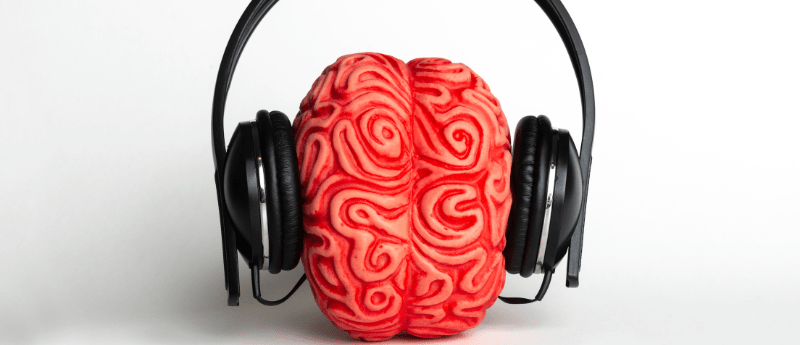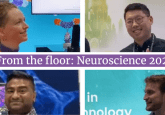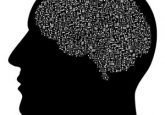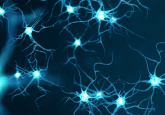Music-based interventions: exploring the neural basis and establishing reproducibility in an emerging field

 Emmeline Edwards (left) is the Director of the Division of Extramural Research at the National Center for Complementary and Integrative Health (NCCIH; MD, USA). She is also the co-chair of the trans-NIH Music and Health Working Group, set up 4 years ago to develop and implement a research agenda for music-based interventions.
Emmeline Edwards (left) is the Director of the Division of Extramural Research at the National Center for Complementary and Integrative Health (NCCIH; MD, USA). She is also the co-chair of the trans-NIH Music and Health Working Group, set up 4 years ago to develop and implement a research agenda for music-based interventions.
 Wen Chen (right) is the Branch Chief for Basic and Mechanistic Research at the NCCIH and also a member of the trans-NIH Music and Health Working Group where she operates as a direct scientific contact for investigators working in the field of music-based interventions.
Wen Chen (right) is the Branch Chief for Basic and Mechanistic Research at the NCCIH and also a member of the trans-NIH Music and Health Working Group where she operates as a direct scientific contact for investigators working in the field of music-based interventions.
At SFN 2022 (12-16 November 2022; San Diego, CA, USA) we caught up with Emmeline and Wen to discuss music-based interventions, the neural circuitry behind them and the techniques used to investigate them. We also discussed the vital importance of establishing a rigorous and reproducible framework for this emerging field.
What are you presenting at SFN?
Emmeline: Our symposium is focused on alerting the community to the fact that there are technologies that allow you to decipher the mechanism by which music impacts the brain. A lot of the studies have been correlational but by using different approaches – comparative studies, EEG studies, transcranial magnetic stimulation (TMS) to activate certain areas of the brain – we can start to properly understand how certain areas of the brain are connected, how they respond to music and lead to an impact on the brain.
By helping researchers to understand these tools and how to use them in this field, this symposium should give more of a premise for the use of music-based interventions in both healthy and pathological conditions.
Wen: To add to Emmeline’s explanation of investigations of music and brain circuitry, we also thought that this is a great opportunity to propose a framework for the field. This could discuss how we think about music-based interventions: what elements are important, what different formats are there and what are the hypothetical pathways through which music-based interventions could influence?
Our symposium provides a platform to discuss these topics and to hear from different experts on their experiences in each of these areas. We hope that their examples will inspire new generations of scientists interested in music and neuroscience to study this field more rigorously and to develop new ideas and technologies. I also look forward to sharing some current active funding opportunities that may help them to advance this field together.
What are music-based interventions and what are their impacts?
Emmeline: Essentially, Music Therapists use music as a therapeutic approach to reduce stress and anxiety. It has also been used in Parkinson’s disease to improve gait and in dementia to reduce some of the behavioral symptoms seen in Alzheimer’s patients. But what’s happening is that those music-based interventions are conducted on a very small scale and not in a very standardized way. This means that we have not been able to pool data together to get definitive answers on how they work and what works best and for whom.
The NIH Music & Health Working Group recognized the importance and potential of strengthening the evidence base of music interventions. To accomplish that goal, it became clear there was a need to encourage Neuroscientists, Music Therapists, Behavioral Intervention Developers, Statisticians and Clinical Trialists to work collaboratively to design and conduct rigorous clinical studies that could be funded by the NIH. This should bring these interventions up to the standard of rigor and reproducibility required from federally funded research. The long-term goal is to have multisite trials of a particular music intervention for various conditions across the lifespan.
Wen: We had a long debate previously in a working group about the scope of music-based interventions. For instance, could a musician practicing by themselves or performing count? In the end, we tried to develop a more generous description, describing any intervention or interaction that impacts our physiology, emotion, behaviors, thoughts, or perceptions, be that in human or animal models, and involves at least one of the foundational elements of music, such as rhythm, melody and/or harmony.
Emmeline: I think Music Therapists have a three-legged framework that includes the music itself, the therapist, and the subject that they are working with. In their framework, there has to be a therapeutic interaction in order for them to consider it ‘music therapy.’ In a research setting, a psychologist or a nurse could deliver a particular music intervention to a set of patients. There is also an insistence on using credentialed music therapies, which has limited the access and the reach of these interventions. To see whether music and other art forms could have a big impact on health, you need to broaden the spectrum and that’s what we’re hoping to accomplish. By providing the NIH with a framework for music-based interventions, a broader spectrum of investigators will be able to conduct these interventions.
 Bring on festival season: why our brains like music
Bring on festival season: why our brains like music
Listening to music brings many people joy, and a new study reveals the neural pathways involved in this reaction. Find out more in this news article.
What techniques or technologies are involved in understanding the circuitry behind these interventions and their impact?
Wen: In comparative research where you can study music interventions in different species, some fundamental circuitry might be very similar. The beauty of using animal models is that you can do a definitive causal analysis and very high-resolution neurocircuitry mapping that we cannot do in humans, no matter how advanced our neuroimaging techniques may be. So, we work with rodents, nonhuman primates and birds. We will talk a lot about birds in the symposium, they’re very special as they have that natural musical ability, which is fascinating to study.
Less invasive neuroimaging gives us both temporal and spatial resolution about what the brain is doing when these humans are engaged in a music-based intervention, either passively or actively. EEG is a great way to look at the temporal changes of brain activity, MRI and various forms of diffusion tension imaging can examine white matter connectivity and functional MRI can provide an insight into the activation of the brain in response to music. Those techniques allow us to discover precisely which regions are activated by music and are involved in the subsequent response.
Techniques such as transcranial magnetic stimulation (TMS) or transcranial direct-current stimulation, which has a lower spatial resolution, allow us to test causal effects. Say I see two brain regions, the auditory cortex and the motor cortex, activated during a music intervention: is that co-activation important for therapeutic effect? To examine this question, you can apply TMS that would disrupt or enhance the connectivity to see if that will abolish or enhance the consequent behavior effects.
Lastly, there are novel behavioral techniques like motion sensor capturing, similar to techniques used to develop Hollywood animations, which you can use to precisely measure the movements of humans and animals. You can measure facial expression, body movement and body sway. That creates a really good behavioral readout of music-based interventions.
You mentioned passive and active interventions, can you explain the differences between the two a little more?
Emmeline: There are questions around whether music-based interventions could be delivered to an individual or to a group and if it could just involve listening to music or engaging with it. Would being involved in a choir, for example, be considered a music-based intervention? And a lot of work still needs to be done to determine whether passive or active engagement provides a better therapeutic outcome.
Wen: This may vary for different conditions. Listening to music in isolation may be good for one condition, while participating in a group musical activity may be better for another. I think there’s also quite an interesting approach to examine, which is more personalized music-based interventions. Everybody is different; what works for one patient may not work for another. There are lots of variables and we have got to figure out how to investigate them thoroughly and how to select the right approaches for the individual and the condition.
 Shocks, screams and dissonant whispers: what makes music scary?
Shocks, screams and dissonant whispers: what makes music scary?
This Halloween we take a look at the science of scary music. What makes us shiver, gasp and our hairs stand on end?
Is there anything you’re particularly looking forward to at SFN, or that you have seen so far that’s really excited you?
Emmeline: We were excited to have the symposium accepted because we really want to encourage younger neuroscientists to get involved in this field because we see the potential of using music as a therapy. It’s cheap, it’s noninvasive, and it’s well-accepted by most individuals. My great hope is to see the research become rigorous and reproducible so that we can eventually impact healthcare and move towards social prescription, where music is included as a modality to provide symptom management for many neurological conditions.
Wen: I was impressed to see the number of posters, events and symposiums on topics that people traditionally find a little bit fringe, such as complementary and integrative health approaches, such as mindfulness and meditation, at this year’s SfN. A lot of these approaches are based on traditional ancient wisdoms, but we don’t really know how they work and whether they do work. I’m really pleased to see that there’s an increasing amount of neuroscience research in that space.
Emmeline: Today there is a very interesting symposium on new advances to quantify behavior in order to understand the brain. Again, for us, understanding and really being able to have a good idea of the mechanism of those behavioral interventions is really important.
Wen: Exactly. What can we do beyond just taking a pill or drug that may have unintended or unknown consequences? A lot of music-based interventions like many other behavioral-based interventions or non-pharmacological interventions are less invasive and less risky but might have fewer side effects, so may have more potential for us, or at least to be coupled with maybe pharmacological interventions. I think that is an interesting paradigm for the neuroscience field to think more about.





